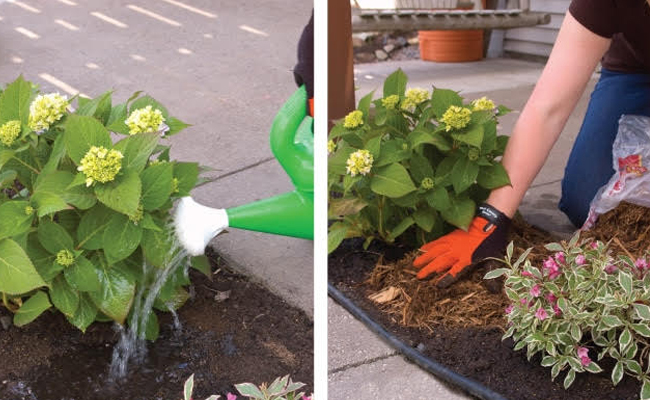Everything You Need to Know About Hydrangeas
Perfection does not really exist in the plant world - or on any planet where living things thrive. But Hydrangeas flower come quite close. Hydrangeas are old-fashioned flowers that are difficult to resist. It is easy to cultivate, tolerate almost any soil, and produce abundant blooms.
The name Hydrangea comes from the Greek words “hydor” meaning water and “angos” meaning vessel. Which together roughly translate to “water barrel”. This is because of the fact that Hydrangeas are notorious for needing lots of water. So, much to discuss about the beautiful flowering plant!! To help you know more about it, we have bought you a complete blog featuring all you need to know about Hydrangea! Read and get yourself updated

Hydrangea is a genus of about 100 species of flowering plants native to southern and eastern Asia (from Japan to China, the Himalaya and Indonesia) and North and South America. Hydrangeas produce flowers from early spring to late autumn. There are three Hydrangeas types namely Mophead, Panicle and Lacecap Hydrangea.
Planting Hydrangeas
- Knowing where to plant Hydrangea bushes is an important first step. The best place to plant Hydrangeas is in a sheltered location with full sun in the mornings and shady afternoons. Avoid planting directly under trees.
- The beauty of growing Hydrangea in pots is that you can move them around. It is easier to move them around and give them the growing conditions they love.
- Fall is the best season to plant Hydrangeas, followed by early spring.
- Most Hydrangeas thrive in rich, porous, moist soils. Hydrangeas grow well in soil containing an abundance of organic material. Add compost to enrich the poor soil.
- They can grow and bloom in partial shade. This is especially true for bigleaf Hydrangeas.
- Plant in spring or fall.
- Dig a hole as deep and 2 to 3 times as wide as a root ball.
- Set the plant in the hole and fill it in half with soil. Water. After drainage, fill the remaining holes with soil.
- Water well.

Care Tips
Although the leaves and flowers of Hydrangea appear delicate, they do not really require much care. These tips are all you need to know about how to take care of Hydrangeas.
Water
Hydrangeas like to be kept moist, but not wet. Don’t let them dry out. Container Hydrangeas may need daily watering.
Soil
All Hydrangeas plant like well-drained soil that is rich in organic matter.
Add Mulch
Add mulch under your Hydrangeas to help keep the soil moist and cool. An organic mulch breaks down over time, adding nutrients and improving soil texture
Some Common Hydrangea Species
- Hydrangea macrophylla
- Hydrangea macrophylla normalis
- Hydrangea macrophylla ssp. serrata
- Hydrangea paniculata
- Hydrangea arborescens
- Hydrangea quercifolia
- Hydrangea anomala

Facts
- Hydrangeas can change color from blue to pink or blue to pink depending on the soil.
- They grow everywhere. From Southern Asia to the Americas
- In Asia,Hydrangeas have a different meaning. It is said that giving someone pink Hydrangeas symbolizes that you are the beat to their heart.
- Hydrangea can be either evergreen or deciduous, though the widely cultivated temperate species are all deciduous.
- Most are shrubs 1 to 3 meters (3.3 to 10 feet) tall, but some are small trees, and others reach up to 30 meters (98 feet) by climbing up trees.
- The Hydrangea symbolism for each color is as follows:
- White Hydrangeas symbolize bragging or boasting, purity, grace, and abundance.
- Purple Hydrangeas symbolize a desire to deeply know and understand someone
- Red Hydrangeas symbolize gratitude and love
- Pink Hydrangeas symbolize love, weddings,marriage, romance, and heartfelt emotions,
- Blue Hydrangeas symbolize enthusiasm and apology or lack of affection.
- People love this plant so much, there's a day dedicated to it! Hydrangea Day is January 5.
So, that was all! Now you are updated about the beautiful plant, why don’t you send one beautiful flower arrangement to your family and friends on their special occasion?














